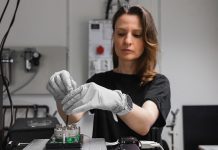Covestro has launched a plant in Dormagen near Cologne in Germany that uses carbon dioxide as a raw material in the production of plastics.
The company is, for the first time, using carbon dioxide instead of crude oil on an industrial scale, creating a foam component made with 20% CO2. Covestro CEO Patrick Thomas said: “We have to change the way we look at CO2, and we will. Using it as an alternative source of raw materials is a solution to some of the biggest challenges of our time, finding a replacement for finite fossil resources such as oil and gas and closing material cycles.
“Thanks to our innovative process and the launch of our production operations in Dormagen, we see ourselves as a pioneer in this area.” The development was welcomed by Thomas Rachel, Parliamentary State Secretary from the German Federal Ministry of Education and Research, which financially supported Covestro’s technology in the research and development phase. He said: “This method of using carbon dioxide as a raw material is an important step as we move toward a sustainable future. The German Federal government is promoting the use of CO2 as a raw material in order to expand the chemical industry’s raw materials basis and open new avenues to sustainability.”
Covestro scientists worked with experts from the CAT Catalytic Center in Aachen – a research institute operated jointly with RWTH – to find the right catalyst that would make the chemical reaction with CO2 possible. In Dormagen, Covestro is using carbon from CO2 to manufacture a new type of polyol. These are core building blocks for polyurethane foam – a versatile material that is used in many industries around the world. The carbon dioxide is chemically bound into the material. The company has invested EUR 15 million in the new plant, which has an annual production capacity of 5,000 metric tons. The CO2 used is a waste product from a neighboring chemical company.
The new CO2 based polyol has been engineered initially for flexible polyurethane foam intended for use in mattresses and upholstered furniture. In terms of quality, the foam achieves at least the same high standards as conventional material produced using only petrochemical raw materials, i.e. crude oil. By eliminating the use of crude oil and saving the energy otherwise used to process that oil, the method is more environmentally-friendly than conventional production processes. Thanks to the catalyst and the considerable energy contained in the remaining content of petrochemical raw materials, no additional energy needs to be expended to make the low-reactivity CO2 react.
Professor Ernst Schmachtenberg, Rector of RWTH Aachen University, said: “Making efficient use of the carbon dioxide molecule, which is normally slow to react, is a real scientific and technical challenge. We have made a breakthrough by combining application-centric basic research with research-based industrial practices.”














